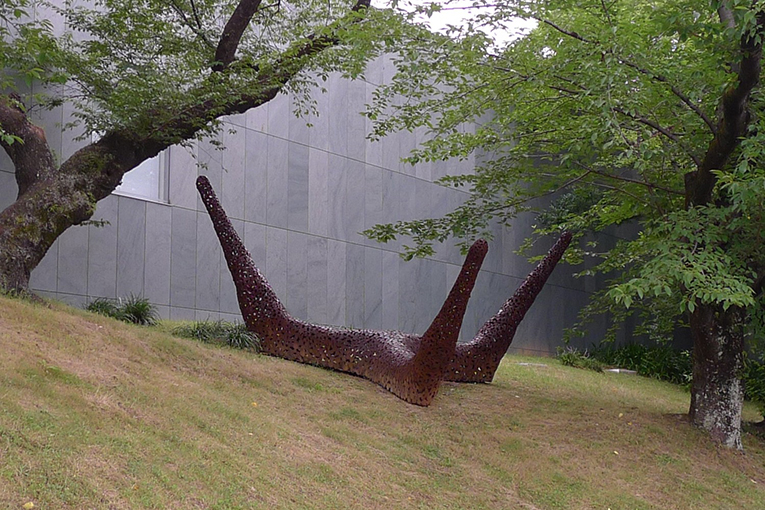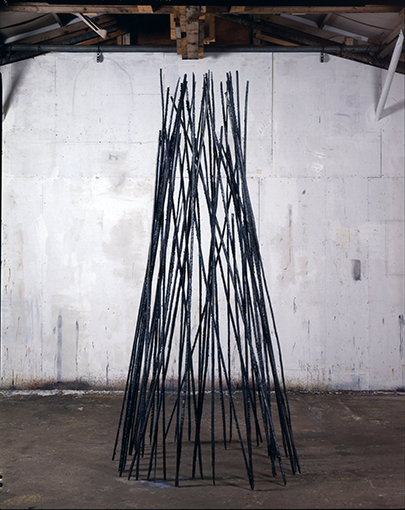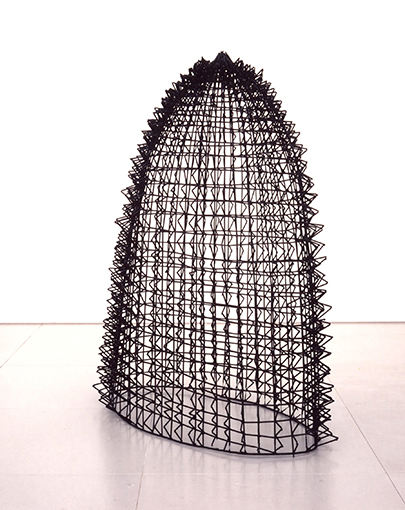
[Audio Guide]
Though an uncommon word, the biological term “protoplasm” refers to the internal components of a cell, one of the fundamental building blocks of life. The artist has used the title for her work while being aware of this fact. Accordingly, the sculpture takes the shape of an amoeba-like life form, and the viewer gets the sense that it has been severed in mid-motion while transforming the shape of its own body. If we think about the space we occupying now as a place for living things composed of cells, what does that mean for how we view our surroundings? For as long as the activities of life continue, these minuscule biological structures will continue to function, without cessation. Like all other things in the space we exist in, we ourselves are also always endlessly circulating. Surely, this space is what Aoki is imagining.

[Audio Guide]
Many thin, elegant looking poles are stacked against one another, stood up so as to balance in the shape of a cone. This sculpture has a delicate mood; however, looking closer one can see that it is made from stiff, rough pieces of iron. Each pole was cut from large, bulky iron plate that had been melted over a heat source—a process that requires an unusual amount of effort. As an abstract sculpture, the form of this work is composed of geometrical components. We can imagine slipping through the sense of stability that this conjures, and the sculpture is constructed according to a delicate balance between it and the surrounding space. A feeling of tension is born from Aoki’s sculptures, which are a place of reciprocal penetration between the yielding sculpture inside and the space outside.

[Audio Guide]
Shaped like an enormous bird cage, this work has the silhouette of a bell and somehow conjures a sense of nostalgia and familiarity. It is not furnished with any of the qualities that are conventionally considered important for sculpture, namely volume or mass. This sculpture gives the sense that we can enter into the work, or slip through it. One could also say that the relationship between the work and the surrounding space is one of interpenetration. The more we look, the more we might feel that the numerous triangular protuberances on the surface of the work are like wedges that penetrate into the surrounding space. However, this awareness is in conflict with the sense of familiarity that we felt when first encountering the work. Aoki’s sculpture brings to the fore the interaction and conflict between sculpture and space, between pliability and sharpness.